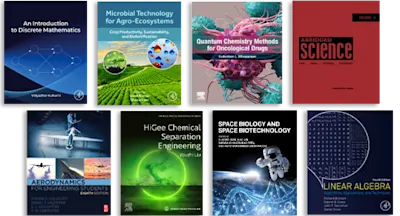
Insect Ecology
An Ecosystem Approach
- 3rd Edition - May 31, 2011
- Author: Timothy D. Schowalter
- Language: English
The third edition of Insect Ecology: An Ecosystem Approach provides a modern perspective of insect ecology that integrates two approaches traditionally used to study insect ec… Read more

The third edition of Insect Ecology: An Ecosystem Approach provides a modern perspective of insect ecology that integrates two approaches traditionally used to study insect ecology: evolutionary and ecosystem. This integration substantially broadens the scope of insect ecology and contributes to prediction and resolution of the effects of current environmental changes, as these affect and are affected by insects. The third edition includes an updated and expanded synthesis of feedback and interactions between insects and their environment. This updated material and a new chapter on applications of insect ecology to social and environmental issues effectively demonstrates how evolutionary and ecosystem approaches complement each other, with the intent of stimulating further integration of these approaches in experiments that address insect roles in ecosystems. Effective management of ecosystem resources depends on evaluation of the complex, often complementary, effects of insects on ecosystem conditions, as well as insect responses to changing conditions.
- Timely revision of a key reference on insect ecology
- Full coverage of ecosystem structure and function balanced with essential background on evolutionary aspects
- New chapter on applications to issues such as pest management, ecosystem restoration, invasive species and environmental changes
- Case studies highlight practical and theoretical applications for topics covered in each chapter
Researchers and professionals working in the fields of insect ecology, plant and animal ecology, aquatic ecology, forest ecology, crop management and related disciplines; natural resource managers and environmental policy-makers; upper undergraduate /graduate students studying insect ecology
Preface
1. Overview
I. Scope Of Insect Ecology
II. Ecosystem Ecology
III. Environmental Change And Disturbance
iv. Ecosystem Approach To Insect Ecology
v. Scope Of This Book
Introduction
2. Responses to Abiotic Conditions
I. The Physical Template
II. Surviving Variable Abiotic Conditions
III. Factors Affecting Dispersal Behavior
IV. Responses To Anthropogenic Changes
V. Summary
3. Resource Acquisition
I. Resource Quality
II. Resource Acceptability
III. Resource Availability
IV. Summary
4. Resource Allocation
I. Resource Budget
II. Allocation Of Assimilated Resources
III. Efficiency Of Resource Use
IV. Summary
Introduction
5. Population Systems
I. Population Structure
II. Population Processes
III. Life History Characteristics
IV. Parameter Estimation
V. Summary
6. Population Dynamics
I. Population Fluctuation
II. Factors Affecting Population Size
III. Models Of Population Change
A. Exponential and Geometric Models
B. Logistic Model
C. Complex Models
D. Computerized Models
E. Model Evaluation
IV. Summary
7. Biogeography
I. Geographic Distribution
III. Habitat Connectivity
Iv. Anthropogenic Effects On Spatial Dynamics
V. Models Of Spatial Dynamics
VI. Summary
Introduction
8. Species Interactions
I. Classes of Interactions
II. Factors Affecting Interactions
III. Consequences of Interactions
IV. Summary
9. Community Structure
I. Approaches To Describing Communities
II. Patterns Of Community Structure
III. Determinants Of Community Structure
IV. Summary
10. Community Dynamics
I. Short-Term Change In Community Structure
II. Successional Change In Community Structure
III. Paleoecology
IV. Diversity Vs. Stability
V. Summary
Introduction
11. Ecosystem Structure and Function
I. Ecosystem Structure
II. Energy Flow
III. Biogeochemical Cycling
IV. Climate Modification
V. Ecosystem Modeling
VI. Summary
12. Herbivory
I. Types And Patterns Of Herbivory
II. Effects Of Herbivory
III. Summary
13. Pollination, Seed Predation and Seed Dispersal
I. Types And Patterns Of Pollination
II. Effects Of Pollination
III. Types And Patterns Of Seed Predation And Dispersal
IV. Effects Of Seed Predation And Dispersal
V. Summary
14. Decomposition and Pedogenesis
I. Types And Patterns of Detritivory And Burrowing
II. Effects of Detritivory And Burrowing
III. Summary
15. Insects as Regulators of Ecosystem Processes
I. Development Of The Concept
II. Ecosystems As Cybernetic Systems
III. Summary
Introduction
16. Applications
I. Ecosystem Services
17. Summary and Synthesis
I. Summary
II. Synthesis
III. Critical Issues
IV. Conclusions
Bibliography
Author index
Taxonomic Index
Subject Index
- Edition: 3
- Published: May 31, 2011
- Language: English
TS